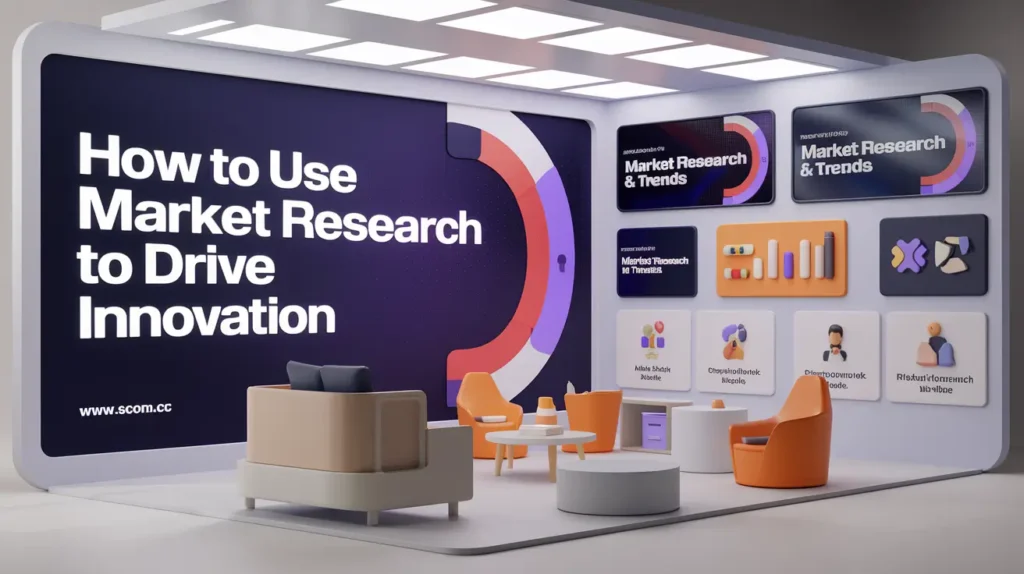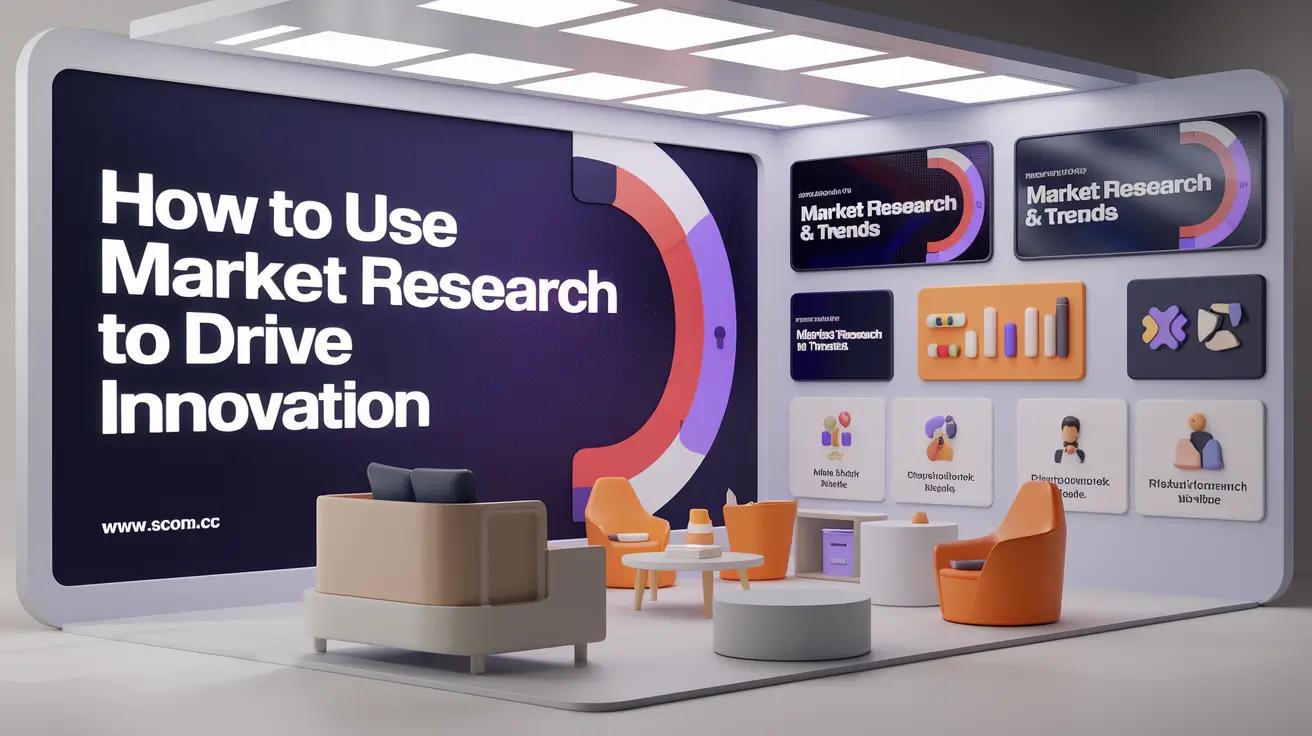How to Use Market Research to Drive Innovation

- How to Use Market Research to Drive Innovation
- What is Market Research?
- Why is Market Research Important for Innovation?
- How to Conduct Market Research for Innovation
- Best Practices for Using Market Research to Drive Innovation
- Case Studies of Market Research Driving Innovation
- Summary Table
-
FAQ
- What is market research and why is it important for innovation?
- How can market research help in identifying market needs?
- What are the key steps in conducting market research for innovation?
- What are the best practices for using market research to drive innovation?
- How can businesses ensure they are using market research effectively?
- What are some examples of companies successfully using market research to drive innovation?
- How often should businesses conduct market research?
How to Use Market Research to Drive Innovation
Market research is a vital tool for businesses seeking to drive innovation. By systematically gathering and analyzing data about market trends, customer needs, and competitive dynamics, companies can uncover opportunities for innovation and develop strategies to meet evolving demands. This article explores how market research can be leveraged to fuel innovation, covering methods, best practices, and case studies to illustrate its impact.
What is Market Research?
Market research involves the systematic collection, analysis, and interpretation of data related to market conditions, consumer behavior, and industry trends. It provides insights that help businesses understand their target audience, identify opportunities and threats, and make informed decisions. Market research can be divided into two main types:
Primary Research
Primary research involves collecting new data directly from sources through methods such as surveys, interviews, focus groups, and observations. This research provides firsthand insights into customer needs, preferences, and behaviors.
Secondary Research
Secondary research involves analyzing existing data that has been collected by others, such as industry reports, academic studies, and market analyses. This research helps in understanding broader market trends and benchmarks.
Why is Market Research Important for Innovation?
Market research is crucial for innovation for several reasons:
Identifying Market Needs
Market research helps businesses identify unmet needs and gaps in the market. Understanding these needs enables companies to develop innovative products or services that address specific customer pain points.
Understanding Customer Preferences
By analyzing customer preferences and behaviors, businesses can tailor their innovations to align with what customers want. This customer-centric approach increases the likelihood of success and adoption.
Analyzing Competitive Dynamics
Market research provides insights into competitors' strategies and performance. Understanding competitive dynamics helps businesses differentiate their innovations and find unique value propositions.
Assessing Market Trends
Keeping track of market trends and emerging technologies through research helps businesses stay ahead of the curve. Identifying trends early allows companies to adapt and innovate proactively.
Reducing Risk
Market research minimizes the risk of launching new products or services by providing data-driven insights. It helps businesses make informed decisions and avoid costly mistakes.
How to Conduct Market Research for Innovation
Effective market research involves several key steps:
Define Objectives
Start by defining the objectives of the market research. Determine what specific information you need to drive innovation, such as customer needs, market trends, or competitive insights.
Identify the Target Audience
Identify the target audience for your research. This includes understanding who your potential customers are, their demographics, and their preferences. Segmenting the audience helps in obtaining relevant and actionable insights.
Choose Research Methods
Select the appropriate research methods based on your objectives and target audience. Common methods include:
- Surveys: Collect quantitative data on customer preferences, satisfaction, and behaviors.
- Interviews: Gain qualitative insights through one-on-one discussions with customers or industry experts.
- Focus Groups: Explore customer attitudes and perceptions through group discussions.
- Observations: Analyze customer behavior in real-world settings.
- Secondary Research: Review existing reports, studies, and market analyses.
Design Research Instruments
Design research instruments such as questionnaires, interview guides, and discussion topics. Ensure that they are clear, unbiased, and aligned with your research objectives.
Collect Data
Execute the research by collecting data from your target audience using the chosen methods. Ensure that the data collection process is systematic and reliable.
Analyze Data
Analyze the collected data to identify patterns, trends, and insights. Use statistical and qualitative analysis techniques to interpret the data and draw conclusions.
Generate Insights
Translate the data into actionable insights that can drive innovation. Identify key findings that highlight opportunities, challenges, and customer needs.
Implement Findings
Use the insights gained from the research to inform your innovation strategy. Develop and refine new products, services, or processes based on the identified needs and opportunities.
Monitor and Evaluate
Continuously monitor and evaluate the impact of your innovations. Use ongoing market research to track performance, gather feedback, and make necessary adjustments.
Best Practices for Using Market Research to Drive Innovation
To maximize the effectiveness of market research in driving innovation, follow these best practices:
Align Research with Business Goals
Ensure that your market research is aligned with your overall business goals and innovation strategy. This alignment helps in focusing the research on areas that will have the most impact.
Involve Key Stakeholders
Involve key stakeholders, including team members, customers, and industry experts, in the research process. Their input can provide valuable perspectives and enhance the quality of the research.
Use a Combination of Methods
Combine different research methods to obtain a comprehensive view of the market. Quantitative data from surveys can be complemented by qualitative insights from interviews and focus groups.
Focus on Actionable Insights
Prioritize actionable insights that can directly inform innovation decisions. Avoid getting bogged down in data that does not provide clear direction for new product development or strategic changes.
Stay Agile and Adaptable
Be prepared to adapt your research approach and innovation strategy based on emerging trends and new information. Staying agile allows you to respond to changes in the market and customer needs effectively.
Leverage Technology and Tools
Utilize technology and tools to streamline data collection, analysis, and visualization. Advanced analytics platforms and survey tools can enhance the efficiency and accuracy of market research.
Validate Findings
Validate research findings through additional testing and feedback. Pilot testing new products or concepts with a smaller audience can help confirm the validity of your insights before a full-scale launch.
Case Studies of Market Research Driving Innovation
Apple's Product Development
Apple Inc. is renowned for its innovative products, such as the iPhone and Apple Watch. The company's success is partly attributed to its extensive market research, which involves understanding customer preferences, analyzing competitor offerings, and identifying emerging trends. Apple uses this research to develop products that align with customer needs and exceed market expectations.
Netflix's Content Strategy
Netflix utilizes market research to drive its content strategy and original programming. By analyzing viewer preferences, behavior, and demographic data, Netflix identifies popular genres and trends. This research informs the creation and acquisition of content that resonates with its audience, contributing to the platform's continued growth and success.
Procter & Gamble's Innovation in Consumer Products
Procter & Gamble (P&G) employs market research to drive innovation in consumer products. The company uses a combination of surveys, focus groups, and ethnographic studies to understand consumer needs and preferences. This research guides the development of new products and improvements to existing ones, ensuring that they meet customer expectations and market demands.
Summary Table
| Question | Key Points |
|---|---|
| What is market research? | Market research involves collecting, analyzing, and interpreting data related to market conditions, consumer behavior, and industry trends. |
| Why is market research important for innovation? | It helps identify market needs, understand customer preferences, analyze competitive dynamics, assess market trends, and reduce risk. |
| How to conduct market research for innovation? | Define objectives, identify the target audience, choose research methods, design research instruments, collect data, analyze data, generate insights, implement findings, and monitor results. |
| What are the best practices for using market research to drive innovation? | Align research with business goals, involve key stakeholders, use a combination of methods, focus on actionable insights, stay agile, leverage technology, and validate findings. |
| What are some case studies of market research driving innovation? | Examples include Apple's product development, Netflix's content strategy, and Procter & Gamble's innovation in consumer products. |
FAQ
What is market research and why is it important for innovation?
Market research involves collecting and analyzing data to understand market conditions, consumer behavior, and industry trends. It is important for innovation as it helps identify unmet needs, understand customer preferences, and assess market opportunities.
How can market research help in identifying market needs?
Market research identifies market needs by gathering data on customer pain points, unmet needs, and gaps in the market. Analyzing this data reveals opportunities for developing innovative products or services that address specific customer needs.
What are the key steps in conducting market research for innovation?
Key steps include defining objectives, identifying the target audience, choosing research methods, designing research instruments, collecting data, analyzing data, generating insights, implementing findings, and monitoring results.
What are the best practices for using market research to drive innovation?
Best practices include aligning research with business goals, involving key stakeholders, using a combination of research methods, focusing on actionable insights, staying agile, leveraging technology, and validating findings.
How can businesses ensure they are using market research effectively?
Businesses can ensure effective use of market research by aligning research with strategic goals, involving relevant stakeholders, combining various research methods, focusing on actionable insights, and continuously validating and adapting strategies based on findings.
What are some examples of companies successfully using market research to drive innovation?
Examples include Apple's development of products like the iPhone, Netflix's creation of original content based on viewer data, and Procter & Gamble's product innovations driven by consumer insights.
How often should businesses conduct market research?
The frequency of market research depends on the industry, market dynamics, and business goals. Regular research, such as quarterly or annually, helps businesses stay informed about market trends and customer preferences.

If you enjoyed this article and found it valuable, we encourage you to explore our news and valuable information section, where you'll find more relevant and up-to-date content that may pique your interest. Additionally, if you are seeking advice or need guidance on a specific topic, we suggest visiting our services section. There, you will find a variety of options designed to assist and support you in addressing your needs. Feel free to check out both sections to get the information and assistance that best suits your requirements.

Leave a Reply